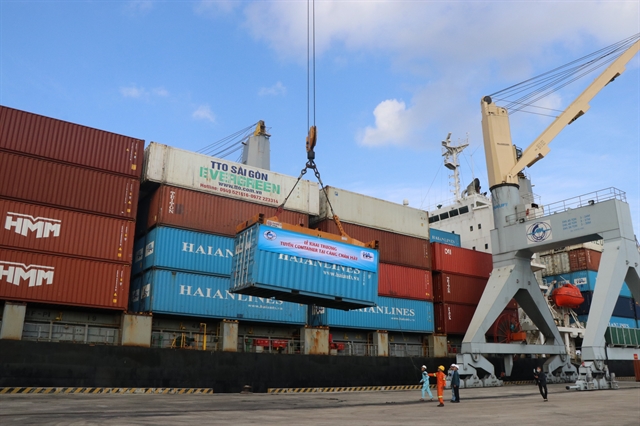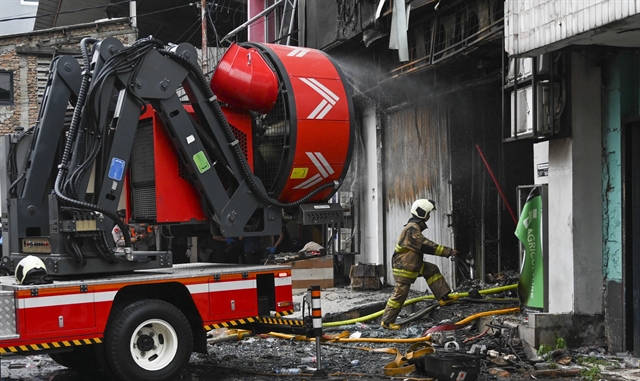 Economy
Economy


|
| A container vessel at Chân May Port, Thừa Thiên-Huế Province. Việt Nam's shipping industry is facing a pressing need to restructure and modernise the shipping fleet to reduce costs. — VNA/VNS Photo Mai Trang |
HÀ NỘI — Việt Nam’s shipping industry is facing with significant pressure for greening as the International Maritime Organisation (IMO) moves forward with the plan to introduce the world’s first global carbon levy on shipping emissions.
Under the proposal, which is expected to be finalised in October and enforced from 2028, vessels emitting carbon dioxide beyond set limits would face a charge of US$380 per tonne.
This poses a pressing need to restructure and modernise the shipping fleet to reduce costs.
According to Vietnam Maritime and Waterway Administration, there are about 1,500 cargo ships in operation, of which, 1,000 ships have a total capacity of 10.5 million deadweight tonnage (DWT) and average age of 17.4 years, higher than the global average.
Most ships were built before 2020 and lack fuel-efficient designs or emission control technologies, making it difficult to meet stricter environmental standards.
Outdated engines will not only push up costs but also reduce operational safety and efficiency, Nguyễn Thị Cẩm Huyền from the HCM City University of Transport said: “This poses threat to profitability and competitiveness.”
It is necessary to replace ships with modern and environmentally friendly technology to avoid heavy levies and preserve profit margins in the long run, Trần Văn Quyền, director of Hai An Container Transport Company said.
Under Việt Nam’s merchant fleet development project, the country aims to double the share of exports and imports handled by its national fleet to 10 per cent by 2026 and 20 per cent by 2030.
The project also introduced incentives for ship moderniation, including exemptions of import taxes and a 50 per cent reduction in tonnage fees for vessels from 1,500 Twenty-foot Equivalent Units (TEUs) or powered by clean fuels such as LNG or hydrogen to 2030.
Under IMO’s proposal, the carbon levy will go to a Net–Zero fund which is projected to reach $40 billion by 2030. The fund will then be used to subsidise green fuels and low-emission technologies. — VNS




